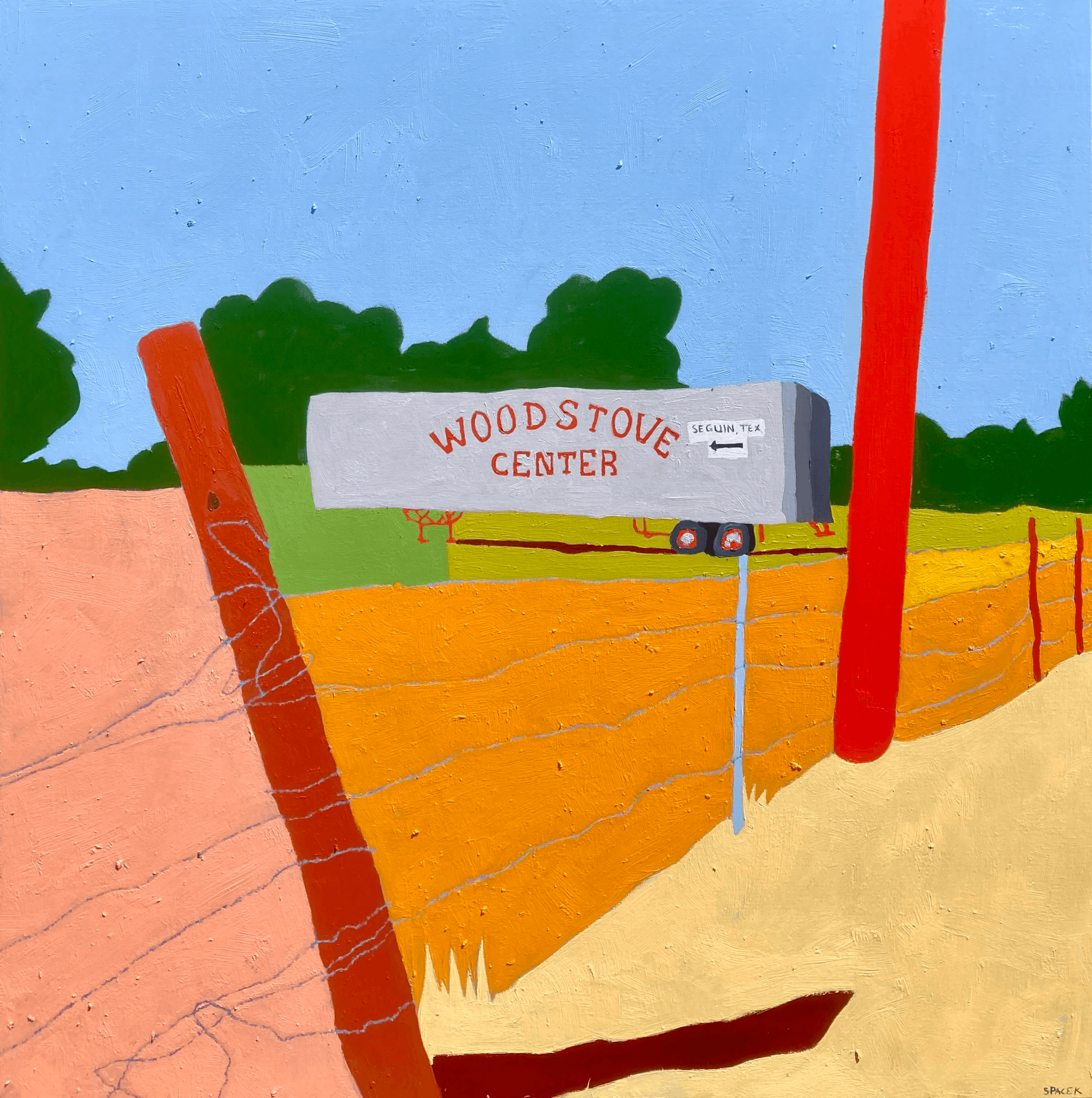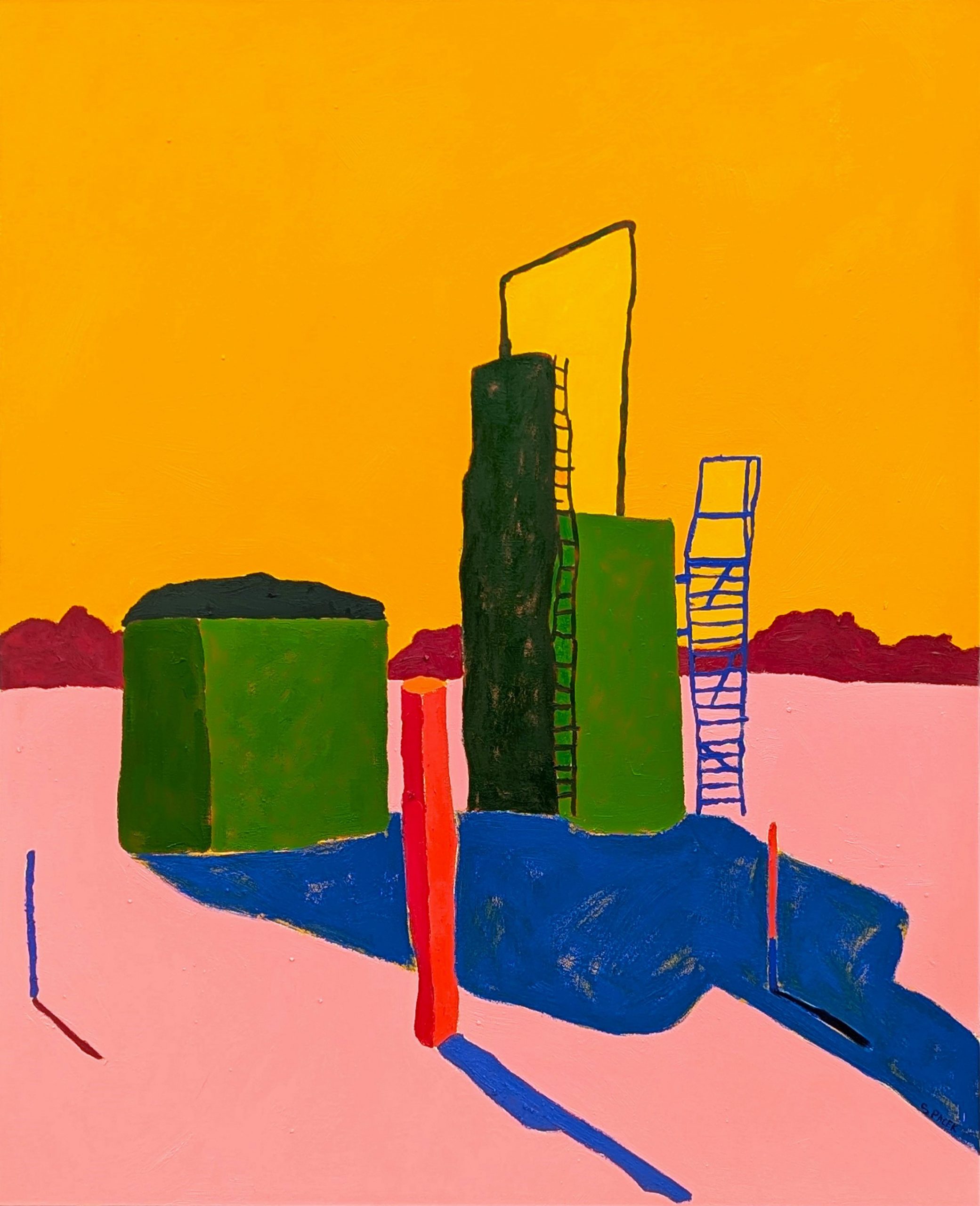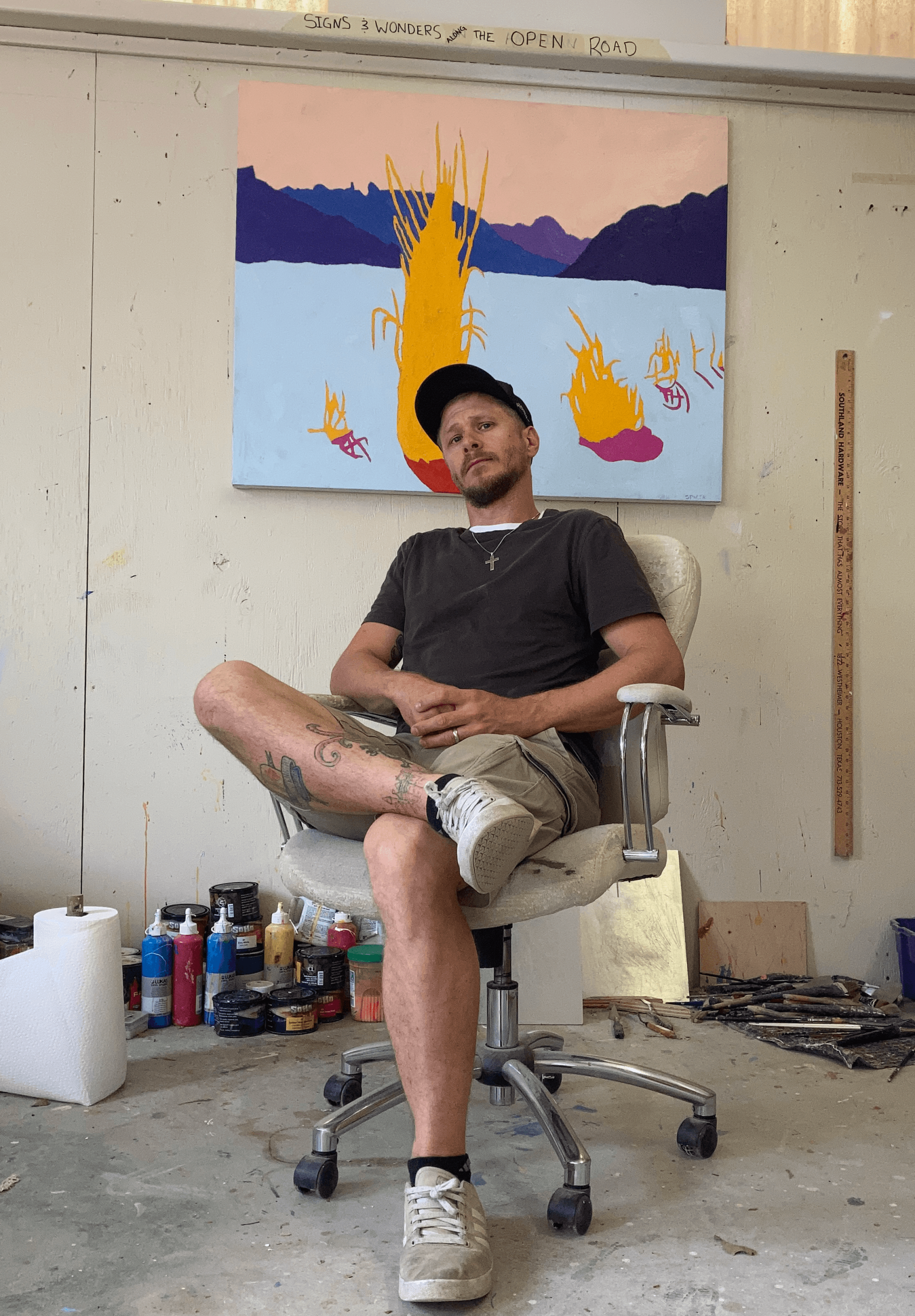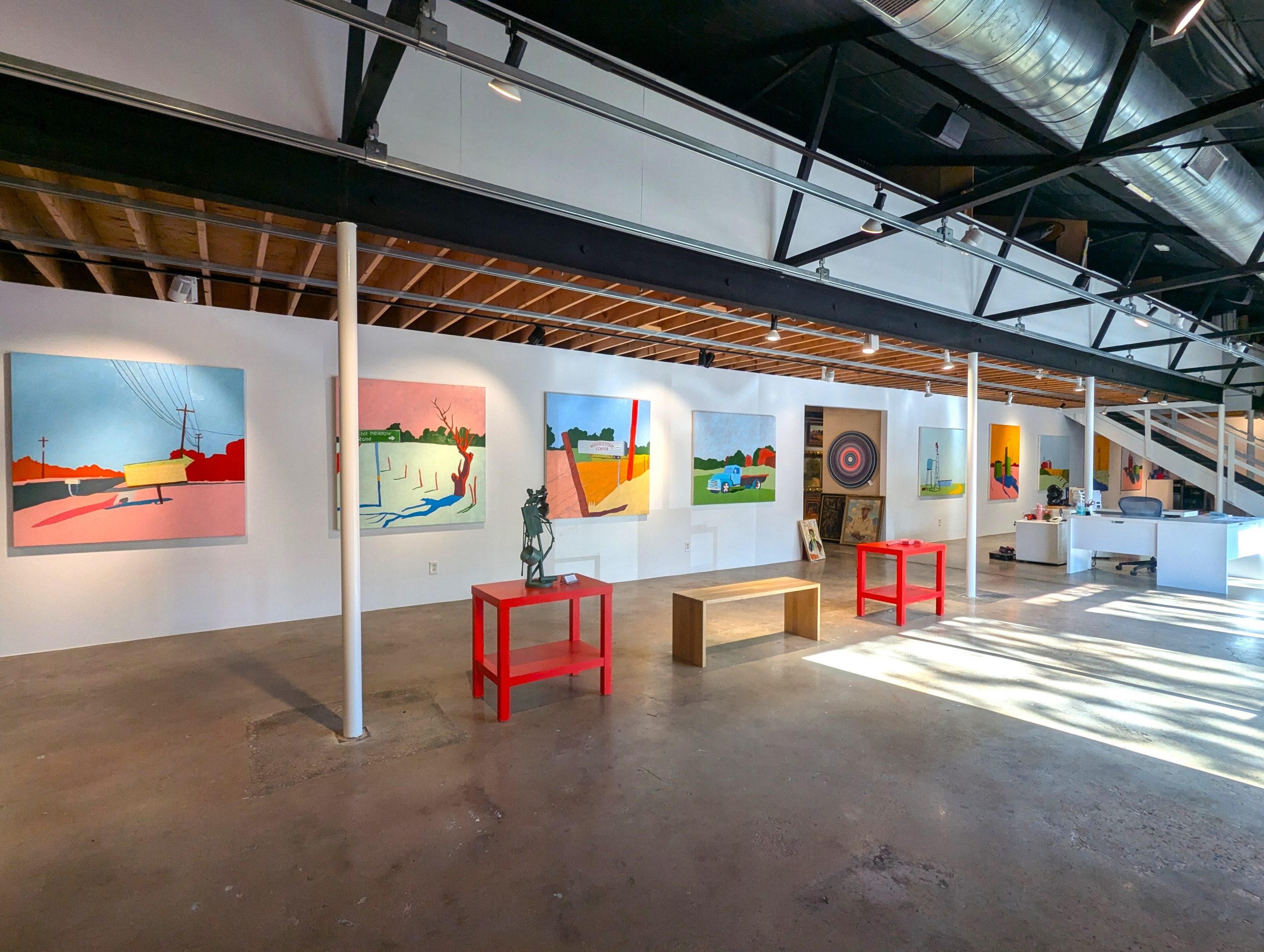Meet Jacob Spacek | Artist & Entrepreneur


We had the good fortune of connecting with Jacob Spacek and we’ve shared our conversation below.
Hi Jacob, why did you decide to pursue a creative path?
I never really had a choice when it came to pursuing a creative path—it’s just always been a part of who I am. From a young age, I excelled in artistic pursuits, winning awards for my work in grade school, playing in bands throughout high school, and even producing a solo concept EDM album. I was constantly creating or collaborating in some form. After high school, I started college without enrolling in any art classes. I told myself it was time to focus—maybe on something practical like nursing—but something felt off. Eventually, I realized: I need to make art.
Not long after that realization, I switched my major to studio art and started leaning fully into my creativity. I quickly found my footing again and stood out in many of my classes. During a summer workshop through my university, I was invited to travel to England to study under Paul Wright, a brilliant painter from Leicester who’s still a good friend. I spent a month in his studio, watching firsthand what life looked like for a full-time working artist. His paintings were bold, emotional, and full of energy—and he created them at a pace that was almost machine-like. That experience stuck with me. One of the biggest takeaways was something he told me: “Your paintings aren’t special because you made them—they’re special because you make them special.” That mindset really changed how I work. It reminds me that every piece demands an extra level of intention. Sometimes that means staring at a painting for days, unsure if it’s finished. Sometimes it’s obsessing over a title. For Paul, he meant putting the same level of energy into each and every brush stroke and even mixing a special color for each mark. For me, with my American Rural series, that extra effort usually goes into creating a large number of color studies where I work and rework the shapes and colors many times before I even begin the final piece.
After college, I put painting on the backburner when my sister and I started BLUEorange Contemporary, a gallery we co-founded in Houston. We ran it together for over five years. It wasn’t a wildly profitable venture, but it paid for itself and gave us the chance to work directly with a wide range of artists. Installing shows and curating exhibitions shaped my understanding of what it means to put on a cohesive gallery show—it was a hands-on education I couldn’t have gotten anywhere else.
During that time, I bounced between jobs in faux finishing and decorative painting. It wasn’t glamorous work, but I picked up techniques I now use in the surface treatments of my American Rural paintings. More than that, those years sharpened my eye—learning how to see and how to finish something with care and nuance.
In 2016, after getting let go from one of those faux gigs, I started JS Canvas. I still run it today. We build high-quality, custom canvases, panels, and pedestals for working artists—especially large-scale and uniquely shaped pieces. After almost a decade running the business, and with a nudge from my friend David Hardaker (another solid British painter—look him up), I decided to fully return to my own painting. What had long been a private practice, something I did for myself with no plan to show or sell, became something I felt ready to bring back into the world.
Since last fall, I’ve been deep into my American Rural series—and not long after I got started, I began working with Reeves Art & Design in Houston. You can see a broad sample of my work on their website, www.reevesartgallery.com, where I am a featured artist. It’s been kind of a whirlwind and I’m very excited about where it’s going.


Alright, so let’s move onto what keeps you busy professionally?
One thing that really sets my work apart is the access I’ve had over the years to other artists, curators, and collectors—people whose input and perspective most artists don’t get on a regular basis. Through my various creative ventures, I’ve been lucky to work closely with artists at all stages of their careers. At BLUEorange, I curated shows with incredible talent from all over the country. With JS Canvas, I’m constantly in artists’ studios when delivering orders—sometimes I even have a key. These casual check-ins often turn into studio visits where we talk about what we’re working on, what we’re thinking about, and what’s pushing our practice forward.
One of the most memorable experiences I’ve had was installing Trenton Doyle Hancock’s Artist of the Year show for Art League Houston at Rice University. Physically handling work at that level changes how you see art—it’s not just what it looks like on the wall. You notice texture, weight, decisions made up close. That kind of intimacy with artwork has shaped how I think about making my own.
The relationships and conversations I’ve had over the years have been fuel for my creative process. I’ve had the chance to talk shop—about craft, mindset, and the business of art—with people who really know what they’re doing. That kind of perspective definitely finds its way into my work. This series marks a big shift from how I used to paint. I’ve moved away from expressive brushwork and emotional mark-making and started focusing more on color and shape—stripping things down to their most essential elements. At first glance, the work might look loose or even a little naive—wobbly lines, distorted forms, unexpected color—but everything is intentional. Every choice is rooted in years of conversations, collaborations, and hands-on experience with other working artists. Funny enough, the two things I’m most proud of in this series—my color choices and compositions—are the very things I used to see as my weak points. Now, because I have gone through the process of listening and learning from those who know more than me, I’d say they’re my strongest.
Nothing about this journey has been easy. There have been plenty of challenges along the way, but if I’m being honest, the toughest one is the constant self-doubt that keeps creeping back in. It’s like there’s this little devil on my shoulder, always trying to convince me to quit. Thankfully, he never shows up when I’m actually painting—that’s my sanctuary. When I’m working, I’m usually locked into a high-level flow state, fully confident. But afterward, when I’m evaluating the work, that’s when the second-guessing starts: Will people actually like this? Are the compliments real, or are people just being polite?
Okay, maybe I’m exaggerating a little—but the truth is, I think a lot of artists wrestle with the deeper question of why they make art in the first place. For me, starting this new chapter has made that battle feel even more personal. Even though I’m almost 40 and have 2 decades of experience creating at a high level, I had never really pursued my own art career seriously until now. Because of that, I’m riding the rollercoaster of self-doubt in a new and very personal way—especially since this body of work comes from such deeply personal place inside me.
I don’t often show it, but I overthink everything—sometimes down to the tiniest detail—but what I’ve realized is that the only way forward is to push through the doubt. I have to keep aiming at the highest goal I can imagine. That mindset helps keep me moving in the right direction.


Let’s say your best friend was visiting the area and you wanted to show them the best time ever. Where would you take them? Give us a little itinerary – say it was a week long trip, where would you eat, drink, visit, hang out, etc.
Haha, it’s funny you ask about my favorite spots in the city—because honestly, this whole body of work came from my journey away from the city and back into the countryside. I grew up in Adkins, Texas—a tiny town with a stop sign, maybe a gas station, and the Kicaster bar as the only real landmark to give directions by. That was it. While I had a good childhood, by my teenage years I was itching to get out. I thought the country was boring and unsophisticated. I couldn’t wait to get to the city where there were “things to do.”
After college, I finally made it to Houston, and at first, it was everything I’d hoped for—fast-paced, exciting, full of energy. But over time, something shifted. The quiet started calling to me. By 2020, I was ready for a slower rhythm and made the move back to the countryside. That shift is really at the heart of my American Rural series.
But before I left, I definitely had my ideal day in Houston down. It’d start at the Menil Collection. Whatever current show they had going was always great, but the permanent collection? Incredible. I especially love the Surrealist room—not because I’m a huge surrealism fan, but because they display all these strange little objects that inspired the artists’ dreamlike visions. I could spend hours just staring at those things. It’s one of the best museum experiences in Texas, maybe anywhere. While you’re there, you’ve got to walk through the Dan Flavin installation, the Cy Twombly Gallery, and of course, the Rothko Chapel. Honestly, that whole campus might be one of the best art-viewing trips you can take in the world—and it’s all within a few blocks.
After soaking in some world-class art, I’d be ready for food. I’m definitely out of the loop now, but back then, my go-to was Little Bigs on Montrose. A burger and a beer from there always hit the spot. After that, I’d usually cruise one of the bayou bike trails or stop at a park to clear my head. If it was baseball season, I’d try to catch an Astros game at Minute Maid. And to end the night? Either Cecil’s Pub with a slice from Pink’s Pizza or Rudyard’s for drinks and conversation with a few good friends.


Who else deserves some credit and recognition?
First and foremost, I’ve got to give credit to God for any talent I have and for all the blessings that have brought me this far. Beyond that, a huge thank you goes to my friend David Hardaker. Like I mentioned earlier, I probably wouldn’t have gone in this direction with my work if it weren’t for his encouragement. After nearly a decade of running JS Canvas and constantly building canvases for other artists, I think he could tell I was starting to burn out. When I moved from Houston to Seguin, I found myself surrounded by these wide-open landscapes, old broken-down buildings, and forgotten farming equipment—all the stuff you see when you take the long way home through South Texas backroads. It started to spark something, but I never had the push to start working in that direction—David and I talk about art a lot—what we’re working on, where the work is headed. One day, he suggested I try painting landscapes. What really sold me was when he told me how the French Impressionists leaned into landscapes not just because they sold, but because they reflected the social and political climate of their time. Painting fields and skies was, in a way, a quiet rebellion against the formal institutions of the art world. That made landscape painting feel like something with a little bite—and that was all I needed. I told David “I’m going to make a dang painting”.
Shortly after that conversation, I loaded my daughter into her car seat and went on my first photo expedition. She ended up falling asleep while I crawled my way down every dirt road I could find, stopping constantly to shoot every water tower, fence post, cactus, cow, rusted truck, and leaning flagpole that caught my eye. That day sparked what would become my American Rural series. While I don’t see the work as making any grand social statements, I do think rural subject matter carries a kind of weight—something raw and real that gives it just a little extra edge.
Website: https://reevesartgallery.com/artist/jacob-spacek
Instagram: @jacobspacek
Facebook: Jacob Spacek
Other: https://www.jscanvasmakers.com


Image Credits
Reeves Art Gallery
Jacob Spacek
